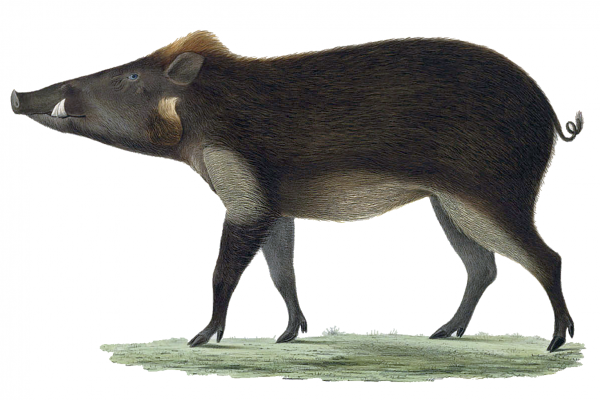Facts About Javan warty pig
The Javan warty pig, commonly referred to as the Javan pig, is a unique species native to the Indonesian islands of Java and Bawean. Unfortunately, it is now extinct on the island of Madura and has been classified as Endangered on the IUCN Red List since 1996. This pig is easily identifiable by its predominantly black coloration with some reddish patches, facial warts, and distinct nuchal (neck) and dorsal (back) crests. Males generally weigh around 108.2 kg, whereas females are smaller, weighing approximately 44 kg.
These pigs inhabit grasslands and secondary forests at elevations below 800 meters on Java and Bawean. They prefer solitary living but can occasionally be found in groups. They are most active during nocturnal and crepuscular hours. The breeding season occurs from September to December, with a four-month gestation period. After birth, piglets are nursed for three to four months.
The Javan warty pig faces several threats, including habitat loss due to human encroachment, farming-related killings, and competition with the banded pig, which can lead to hybridization.
To address these threats, conservation efforts are being undertaken. The World Association of Zoos and Aquariums is involved in captive breeding programs for these pigs, aiming to reintroduce them into protected areas. Scientists employ molecular mapping to distinguish true Javan warty pigs from hybrids. Additionally, educational programs are being conducted to inform local communities about the significance and endangered status of this species.
These combined efforts are crucial to ensuring the survival of the Javan warty pig for future generations.

 Papua New Guinea
Papua New Guinea